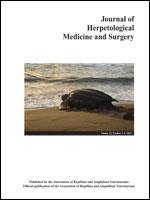The impact of mercury (Hg) and selenium (Se) compounds on wildlife health is an issue of concern, especially because anthropogenic practices (e.g., fossil fuel combustion, metal processing) release these trace elements and their compounds into the environment where they become incorporated into food chains. Little is known about the concentrations of these elements in tissues (other than in blood) of most wild reptiles, especially for pelagic species. The purpose of this study was to document Hg and Se concentrations in leatherback sea turtles, Dermochelys coriacea. To assess Hg and Se concentrations in leatherbacks, multiple tissue samples (whole blood, enteric contents from the small intestine, feces, yolked follicles, liver, and salt gland) were collected from dead, stranded male and female leatherbacks that were assigned to three life stage classes (juvenile, subadult, adult) identified at gross necropsy. The tissues were tested for Hg and Se concentrations. The liver exhibited the highest concentrations of both Hg and Se compared with other tissues. Adults had the highest concentrations of Hg in their livers compared with juveniles and subadults; however, Se concentrations did not differ between subadults and adults. Leatherbacks with a larger curved carapace length had greater liver Hg and Se concentrations. The Se:Hg ratio in the liver was highest in juveniles, followed by subadults, and then adults. Because these animals are long-lived, Hg or Se accumulation may become a physiological challenge, especially because of ongoing anthropogenic input of these elements and their compounds into the environment. Further population monitoring of toxicants in marine turtles is warranted to determine whether tissue concentrations of these elements continue to increase long term or vary with age, life stage, sex, or reproductive status.
How to translate text using browser tools
1 September 2012
Assessment of Mercury and Selenium Concentrations in Tissues of Stranded Leatherback Sea Turtles (Dermochelys coriacea)
Justin R. Perrault
ACCESS THE FULL ARTICLE
It is not available for individual sale.
This article is only available to subscribers.
It is not available for individual sale.
It is not available for individual sale.

Journal of Herpetological Medicine and Surgery
Vol. 22 • No. 3
September-December 2012
Vol. 22 • No. 3
September-December 2012
Dermochelys coriacea
leatherback sea turtle
mercury (Hg)
selenium (Se)
tissue
Trace elements




